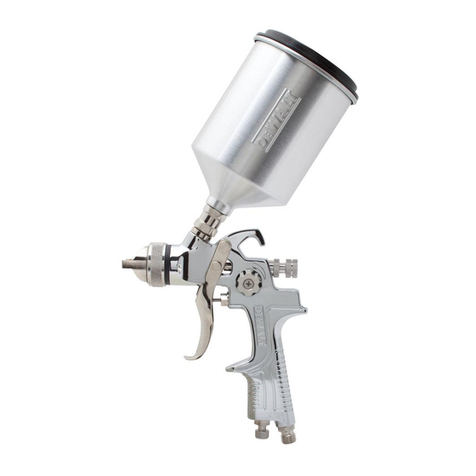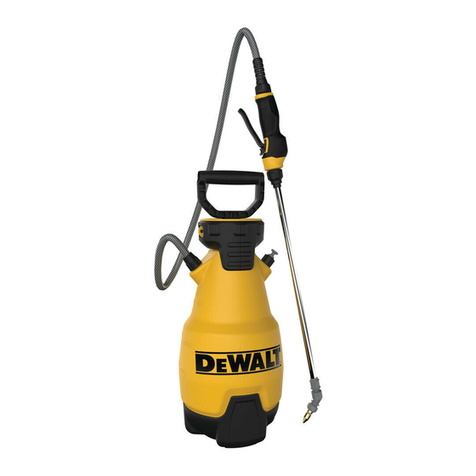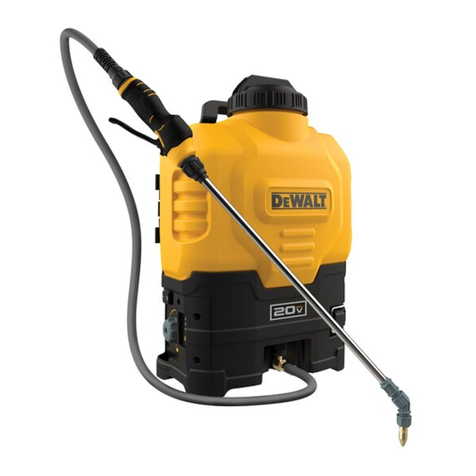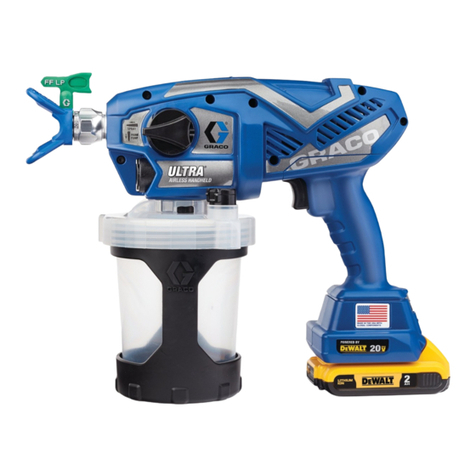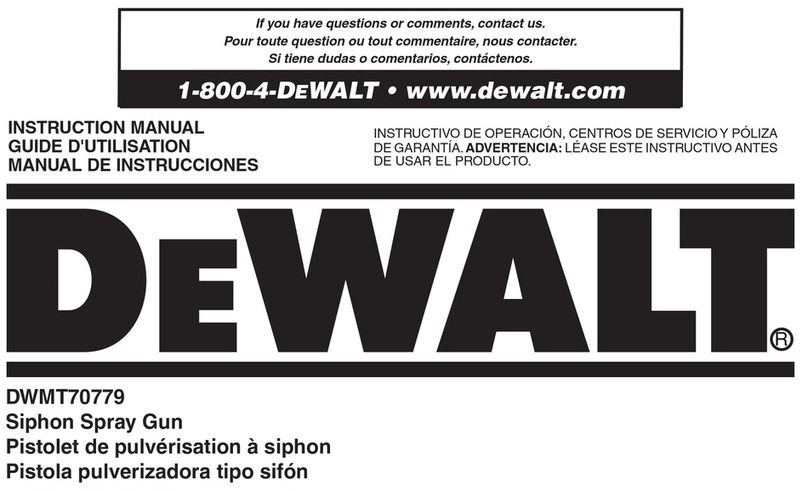8
English
OPERATING PROCEDURES
WARNING:
Donotattempttounclog(backflush)thespraygun
bysqueezingthetriggerwhileholdingyourfingerinfrontof
the fluid nozzle.
CAUTION:
Pressure may vary according to viscosity of material
used.Maximumworkingpressureofthegunis60PSI.Donot
exceedpressurelimitofgunoranyothercomponentinsystem!
CAUTION:
Prior to daily operation, make certain that all
connections and fittings are secure. Check hose and all
connections for a weak or worn condition that could render system
unsafe.Allreplacementcomponentssuchashoseorfittingsmust
haveaworkingpressureequaltoorgreaterthansystempressure.
Prior to shipment, this spray gun was treated with an anticorrosive
agent. Before use, make sure that it is carefully flushed with thinner.
1. Loosen the air cap (C) and rotate the horns (D) to achieve
the desired spray pattern. Tighten the air cap.
2. Attach spray gun cup (A) to the gun handle.
NOTE: The (B) filter supplied is optional to protect against
contaminants and small particles. See parts list for
filter orientation.
CAUTION:
donotuselatexorotherheavypaints
3. Attach air supply line to 1/4" NPS air inlet.
CAUTION:
NEVER point spray gun at self or any other person.
Accidentaldischargeofmaterialmayresultinseriousinjury.
4. Adjust air pressure on the air compressor.
CAUTION:
DONOTexceed60PSI.
5. Depress the spray gun trigger (E) fully to spray material.
NOTE: Depressing the trigger partially will cause only air
to be released.
ADJUST SPRAY GUN:
1. Turn the fluid control knob (I) counterclockwise to increase
the amount of material released, or clockwise to decrease.
2. Turn the pattern control knob (H) counterclockwise to
increase the width of the “fan spray”, or clockwise to decrease
the width of the spray.
3. Turn the air volume control knob (F) counterclockwise
to increase the air quantity, or clockwise to decrease
the air flow.
CAUTION: Care should be exercised when handling spray gun
to avoid damage to the orifice of the air cap and tip of fluid nozzle.
Damagetothesepartsresultsinirregularspraypatterns.
MAINTENANCE
WARNING: Shut off air compressor, release all pressure
by depressing trigger, and disconnect power source before
disassembly or removal of any part of the gun or attached
components.
CAUTION: Alwaysexerciseextremecarewhenusinganysolvent
orthinner.Nevercleanthegunnearfire,flame,oranysourceofheat
or sparks. Properly dispose of used cleaning materials.
CAUTION: DONOTsoaktheentiresprayguninsolventor
thinner for a long period of time as this will destroy lubricants
and possibly impair operation. NEVERuselyeorcausticalkaline
solution for cleaning. Such solutions will attack aluminum alloy
parts of the gun.






